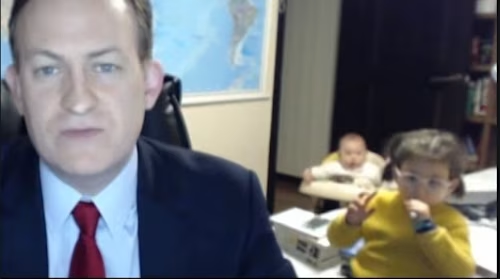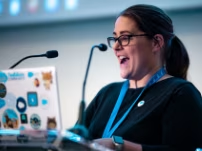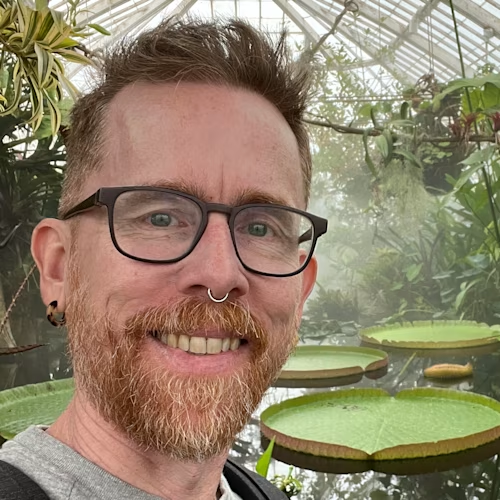
How I host Ohana Coffee - Tips and Tricks for an Engaged Community
Lessons to building a community of admins and developers virtually

Anyone who knows me knows that I am the founder of Ohana Coffee, a virtual meet-up for Salesforce admins, developers, and end users alike. For those of you who didn’t know me, here’s a little background.
In early October 2016, I had the opportunity to attend a conference in San Francisco. It was here that I met the Salesforce Community from various parts of the world. Wanting to keep that connection alive, I founded Ohana Coffee, a water cooler style virtual meetup. Since then, I’ve had the privilege of hosting hundreds of virtual meet-ups building a virtual community.
I’ve had several inquiries as to how I host Ohana Coffee, what platforms I use, and specifically how to host larger groups while still making people feel welcome. These are some lessons I have learned from building a community of admins and developers virtually. While Ohana Coffee is a watercooler-style meet-up I have attended developer meet-ups that employ similar techniques successfully. Building a personal relationship within your community, be it virtual or not, is so important. Having that social aspect helps when you need professional input or collaboration, assistance, or a code review; knowing the right person to go to is vital. And don't forget to pay it forward—that is what keeps a community strong.
Choose your technology wisely!
Choosing the right virtual meeting tool is important to a successful developer meet-up. You have MANY options. Whichever you select, be sure it offers a video option. Your attendees being able to share their camera adds to the human connection experienced allowing them to read facial cues and body language. I find a tool where you can see all attendees' video feeds simultaneously (think “The Brady Bunch”) really helps. Also, as a facilitator, you’ll be able to see if someone is trying to talk or feels uncomfortable.
For inviting and managing Ohana Coffee attendees, I typically create an Eventbrite event page. This saves me time adding people to a list and makes sending out the link to the meeting one simple click. I promote when tickets go live on the channels that Salesforce admins and devs will see; for example, Twitter.

I have enabled a waitlist also, and if a spot frees up, that ticket will go to the first person on the waitlist. To have a full screen of attendee video feeds (The Brady Bunch effect), 25 attendees is the maximum capacity for Ohana Coffee. This is so that everyone can see each other and stop talking over each other. This is also a good size for healthy conversations. There are plenty of people to get opinions, but not too many to flood the opinion pool. Consider limiting the size of your meetups to maintain engagement and intimacy.
The link to the event automatically sends one hour before the event. For the actual meet-up, I use a pro-level Zoom account that gives me admin feature controls such as enabling and disabling recording, encryption, chat, and notifications. Also included is attendee management such as add, delete, and mute, which is so important when excited typing happens! Not to mention that Zoom Pro gives unlimited meeting time up to 24 hours, whereas the free version limits you to only 40 minutes meeting time.
Your role as a facilitator
You may think the role of a facilitator is easy. Just send out an invite request, turn on your camera, and let the conversation flow right? Nope. There is a bit more to it.
If you are hosting a work call, you need a topic or a purpose for that meeting and an end goal. Your job as a virtual meet-up facilitator is to drive the call to that goal and “park” those conversations that are not productive. And we all know how developers sometimes go into the rabbit hole on a particular topic or technology.
If yours is a water cooler style meet-up, you need to get the conversation flowing and get everyone engaged. I find sharing a funny or embarrassing story about myself breaks the ice and gets everyone going. Did I ever tell you guys I was using half and half in my cereal as milk? (true story!)
Set up work: help other developers who may have difficulty getting onto the video tool or have a question at the start of a meeting. Usually, during the first five minutes of any Ohana Coffee, I am answering questions like “ Where is the link?”, “I am getting this error message”, etc., so having a go-to question like “how is everyone” or “what did you get up to this weekend” helps things get started so no one is sitting in silence.
You also need to look for visual cues from the attendees, indicating potential issues when it comes to communication styles or differing points of view. As a facilitator, having a couple of pocketed topics you can use to change the subject is key to diffusing these situations.

Suggested guidelines for developer meet-ups
Depending on your meeting topic/style/intent, you may have different rules. Here are some best practices of basic etiquette I follow and ask my attendees to follow to create a good virtual meet-up experience. .
Intros: If it is a small group, everyone briefly says “hello”. If I have a large group, I like to play the “Who are you?, Where are you?” game where attendees raise their hand if they are a “dev”, “business user”, etc., and where they are from geographically.
Speaking over people happens so frequently during in-person meetings. This is why I have a Brady Bunch-style video set up so developers can see each other trying to talk, and as a facilitator, I will pause the conversation to allow attendees to speak.
Just like when you code: Test everything! This includes camera/video, lighting, Wi-Fi, and screen sharing. Before every meeting I take a look at what is on the walls around and behind me. Not doing so can be embarrassing: trust me!
Have FUN!
When in doubt, just be polite. People want to be heard, seen, and respected during in-person conversations, so it shouldn’t be different virtually!

Remember when I said check your background? Bet this guy will do so every meeting from now on, although the dancing kids in the background could liven up your meet-up!
Water cooler meet-ups
Let’s talk about water cooler developer meet-ups for a moment. Ohana Coffee is a water cooler meet-up. What that means is it is an informal gathering where we don’t have set topics (though I do have some pocketed in case there is no conversation). People attend and talk about anything they want to, from Salesforce problems they are having down to sharing funny stories about themselves.
What is important to remember about these developer meet-ups, especially if you are promoting on social media, is that you need to protect your attendees. Do not share the link to the video chat on social media. Instead, mail it directly to attendees and pay attention to who is on the list of attendees. In the past I have had marketers or recruiters attend and try to solicit my attendees. This is why having a virtual meeting tool where you can manage attendees is important. Also, on Ohana Coffee, people will share personal stories, so you need to make the meeting a safe space. If you are having a technical discussion, you also want to make sure the right audience is attending. There is nothing worse than talking about JavaScript on a meet-up of Python developers. Protecting your community is vital to maintaining and encouraging high-quality technical discussions. Without trust and openness in the community, you won't have the quality of discussions and in-depth technical debates that will keep attendees coming back and distinguish your meet-up from the many others out there. Protect your group so a sense of identity and intimacy can flourish.
Cadence is important too. If you are doing a water cooler meeting that is recurring, have it in a cadence. For example, Ohana Coffee is every third Friday of the month. In the beginning, I didn’t have a set day, which made it difficult for attendees to fit it into their schedules. Of course, you can change your cadence or add additional dates if you want, but the routine will help everyone plan.
DON'T WORRY!
For the first year (and sporadically now) I would worry that people wouldn’t show (and it happens). I get last-minute cancellations, which is why I have a waitlist in place. I still worry: what if no one wants to talk, OMG what if people don’t talk? Will I have to talk for a full hour? Will they not get bored with me and my funny accent? That said, experience has shown me that, once you throw out an icebreaker, conversations flow! If you are really worried about it, have a buddy attend and the two of you talk and try getting people to join your conversation.
I hope this has helped you a little; and of course, reach out to me if you have any questions or suggestions!

Lauren Dunne is our Senior Salesforce Evangelist and self-confessed Salesforce geek! She has ten years of Salesforce expertise, and her past roles range from Solution Architect to “Admineloper.” She is a 2x Salesforce MVP and founder and host of Ohana Coffee, a global virtual meet-up. She even has a Salesforce tattoo!
Additional resources

Lauren Bolopue is our Lead Product Evangelist and self-confessed Salesforce geek! She has eleven years of Salesforce expertise, and five years of Docusign expertise, and her past roles range from Solution Architect to “Admineloper.” She is a Salesforce MVP alum and founder and host of Ohana Coffee, and Docusign Meetups global virtual meet-ups. She even has a Salesforce tattoo!
Related posts
Docusign IAM is the agreement platform your business needs




